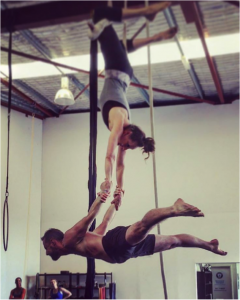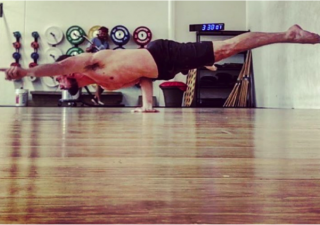We welcome Mat Harvey to the Range of Motion Staff Team. Mat shares with us his philosphies on exercise, movement, and helping his clients achieve their goals.
I wanted to put a blog together for all the crew at Range of Motion to introduce myself and how I like to train both myself and my clients. A little bit of the thought processes that goes behind what I do. To be honest, it was harder to put into words than I thought! Here goes:
I enjoy working with people with a long term, holistic approach to wellbeing, health and performance.
From the age of 15 I’ve coached people to perform across a diverse range of sports and active pursuits. This has given me a deep appreciation of many aspects of human performance, physically, mentally and emotionally.
My coaching tends to reflect these experiences. Historically i’ve enjoyed elite level endurance and metabolic conditioning. This experience left me wanting to taste the other side of the coin – strength. Through CrossFit I was exposed to a great number of training tools, although my terrible mobility (as a result of cycling and sitting), left me with a litany of chronic injury as I moved heavier and heavier weight.
This motivated me to learn about stretching, mobility and stability. This journey led me to study under contemporary dancers, professional circus performers, yoga practitioners and martial artists. These people taught me about how to regain my lost mobility and the importance of spinal mobility. I also learnt how difficult bodyweight strength practises are to master. The difficulty and challenge these movements present is why they continue to hold my interest.
In writing this blog and self examining why I do what I do I came up with the following ‘rules’ I tend to follow regardless of my or my client’s goals:
Rule 1: My goal is to help my clients meet their goals. Simple.
Sometimes their goals need a little reality checking but that is ok too. The key personality trait I look for in a potential client is patience and persistence. Hard work over time will always achieve goals.
Rule 2: Prepare joints and connective tissue for athleticism first.
Muscle tissue takes about three months to regenerate, whereas connective tissue takes about 9 months to regenerate. Neglecting this time frame and loading joints inappropriately (like elbows, hips or wrists) will almost always lead to tendon inflammation and pain.
Rule 3: Be realistic with clients regarding timelines and speeds of adaptation.
Yes it takes longer than 3 months for the average adult to stick a freestanding handstand. Timelines are always dependent on client’s history, for me – it took two years to get a solid handstand. For other clients less than 12 months. Advanced movements such as press handstand, planche, or triple bodyweight deadlift – years of dedication are required.
Rule 4: Never stop being a student
The more I know, the more I know I don’t know. This is why I love learning with my clients.
Rule 5: Generally – more muscle mass is better, but not at the expense of mobility.
More muscle essentially equates to more resilience on a micro and macro level. Muscles are a great store of nutrition for the body in times of stress. Muscles also act as armor, helping negate damage caused by physical impact – important in so many physical pursuits. Muscles look good, bolster confidence and importantly can exert more force.
Rule 6: Have fun, laugh and don’t take any of this too seriously
Is health serious? Yes, it’s deadly serious. Will you enjoy the process, get better results and improve mental resilience if you have a good laugh along the way? Absolutely.
When looking to help my clients achieve their goals I generally ensure they posses the required range of motion firstly, secondly their joint and connective tissue is prepared adequately (this takes a very long time compared to metabolic and muscle development) and finally I then work on muscular strength and cardiovascular systems. Quite often I will minimise cardiovascular development in favour of strength and mobility, quite simply myself and my clients find it is very hard to recover from both heavy stretching, strength training and metabolic conditioning. Having said this, I always refer to rule one – meeting the client’s goals.

I hope this gives you a little insight into how I currently like to work with myself and my clients. I present this information with one caveat – In the face of new, better information, I am highly likely to change my mind and hopefully improve.
See you at Range of Motion!





